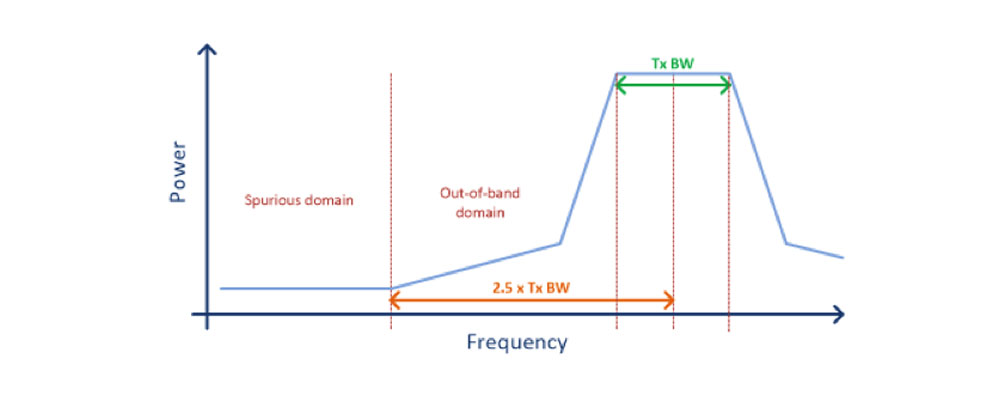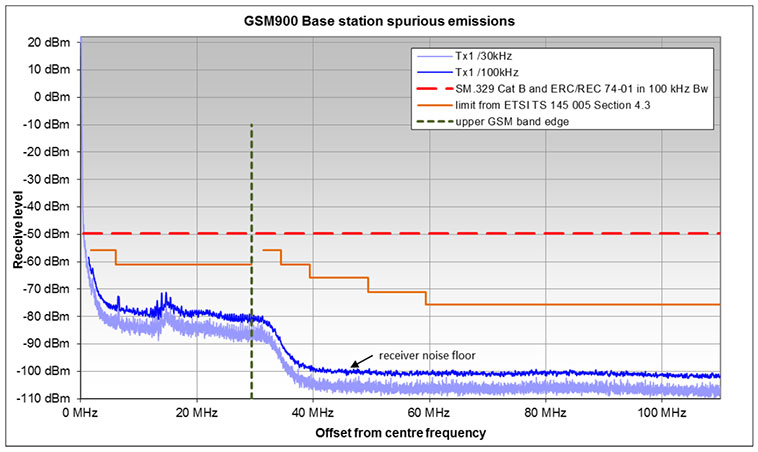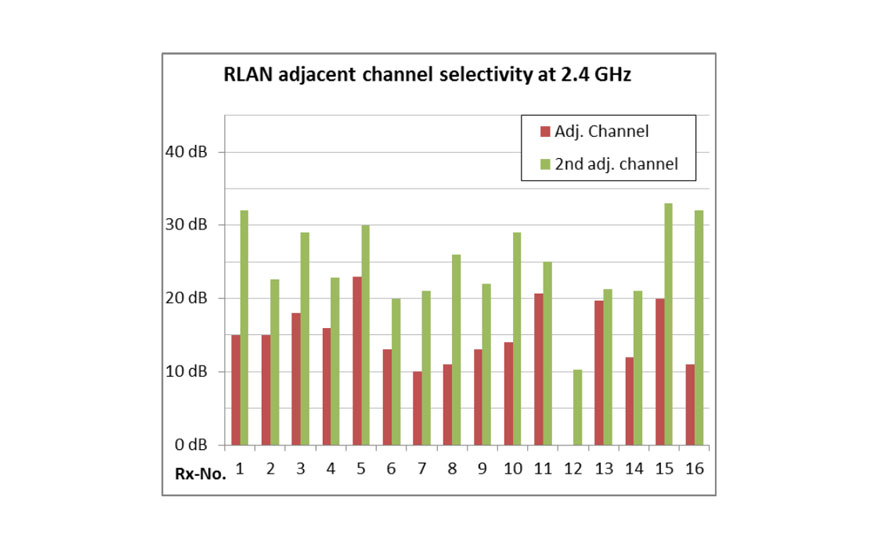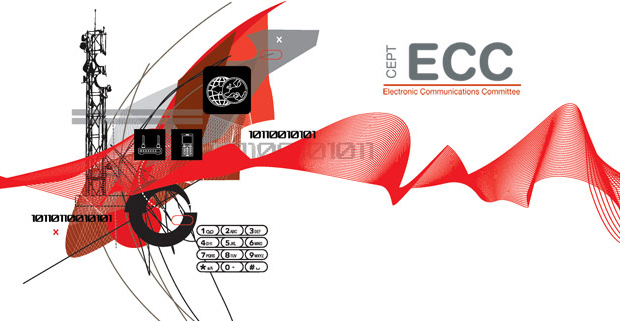The role of unwanted emissions and receiver performance in spectrum management
Spectrum engineering has a role in ensuring that different systems can coexist in a spectrum efficient way without causing harmful interference to each other. In particular, sharing and compatibility studies are important ways to assess that role. We discussed both of these points in a previous newsletter article in May 2017, but what about the role of both transmitter and receiver parameters in spectrum management? Here, we take an in-depth look at the function of both, and examine the recent and ongoing work within the ECC around transmitter and receiver parameters in spectrum management.
Transmitters versus receivers: Two sides to the interference coin
Both transmitters and receivers play a role in ensuring efficient use of spectrum. Transmitters need to be designed with sufficient filtering to ensure their unwanted emissions don't cause interference to neighbouring users of the spectrum. However, at the same time receivers also need to ensure they have sufficient filtering (selectivity) to reject interfering signals from neighbouring users. In some cases, either the transmitter or receiver is found to be the dominant factor in interference; in other cases both play a role.

The role of transmitter and receiver filtering in interference
Examples of both cases can be seen in the developments within the UHF spectrum range (470-862 MHz) in recent years. When the '800 MHz' band — from 790-862 MHz — was studied for mobile (4G) usage, compatibility studies (see CEPT Report 30) showed that both unwanted emissions from mobile systems and selectivity of the digital terrestrial television (DTT) receiver could have an impact on DTT reception. However, the studies also found that reducing further unwanted emissions of 4G base stations beyond a certain level would not provide additional mitigation because receiver selectivity would then be the dominant interference effect.
Later, when the '700 MHz' band (694-790 MHz) was studied for mobile usage (see CEPT Report 53), it was found that unwanted emissions from mobile terminal devices were predicted to be the dominant effect. This differs from the 800 MHz case due to a number of factors, among them the fact that in the 700 MHz band the uplink portion, where mobile devices transmit, is closer to the DTT spectrum, whereas at 800 MHz the downlink portion, where base stations transmit, was closer. Also, there was a lower guard band between the two systems.
Defining unwanted emissions performance of transmitters
Minimum requirements for unwanted emissions from transmitters need to be specified in order to prevent interference. Within the European regulatory framework ECC and ETSI co-operate to ensure this. ECC carries out sharing and compatibility studies and liaises with ETSI to ensure the results are mutually acceptable to both parties. Results of these studies are then implemented consistently in ECC deliverables (Decisions or Recommendations) and ETSI Harmonised Standards.
There are two categories of unwanted emissions: out-of-band emissions, which refers to modulation-related emissions directly outside the transmitter’s channel bandwidth; and spurious emissions at higher frequency offsets, which include harmonic and parasitic emissions as well as intermodulation products. The boundary between the out-of-band and spurious emission domains is usually defined as 2.5 times the transmitter’s bandwidth, but there are some exceptions to this rule.

Illustration of boundary between out-of-band and spurious domain
ETSI Harmonised standards define specific requirements for the out-of-band domain. General requirements for spurious emissions in all frequency bands are provided for in ERC Recommendation 74-01. The relevant limits from this recommendation are reflected in the relevant ETSI standards.
ERC Recommendation 74-01 is currently under review to ensure the spurious emissions limits contained within are still fit for purpose and relevant for new and upcoming technology.
Particular challenges in this ongoing review are raised for 5G technology using active antenna systems (AAS). In this case, the antenna array is integrated in the device, which means that unwanted emissions cannot be as easily measured. It has also been reported that it will be difficult for 5G systems in millimetre wave bands (26 GHz and above) to meet the existing limits, due to constraints on filtering technology.

Comparison of non-AAS and AAS architecture. In the AAS case no antenna connectors are available for measurement
While minimum regulatory requirements must be sufficient to prevent interference, it is also important to accurately quantify equipment performance in sharing and compatibility studies. In ECC Report 249, published in 2016, measurements of a range of different types of transmitters showed that typical equipment generally exceeds – by some margin— the minimum requirements for both out-of-band and spurious emissions. Therefore, assessing interference based on the minimum requirement represents a worst-case scenario which may limit opportunities for sharing. The report concluded that sharing and compatibility studies should reflect actual equipment performance in order to ensure efficient use of spectrum. Ideally a statistical distribution of unwanted emissions should be used in the studies to capture the spread in performance of different equipment models.

Example of measurements on a GSM base station which show that unwanted emissions are significantly better than the minimum requirements (Source: ECC Report 249)
As a follow-up activity, an ECC Recommendation is under development within Project Team SE 21, which aims to provide guidance on how to incorporate typical equipment performance in sharing studies, when appropriate. This will be useful for ECC project teams and administrations, who will be able to make use of the best available information to ensure accurate studies.
Receiver performance and the Radio Equipment Directive
Receiver requirements are typically only mandated through ETSI harmonised standards. Previously, there was no mandatory requirement for minimum receiver performance, which was problematic for spectrum management as it could give rise to interference problems, particularly for receive-only devices (e.g. broadcast TV receivers) and some categories of licence-exempt short range devices. This changed with the introduction of the EU Radio Equipment Directive (RED), which came into force in 2016. The directive requires that radio equipment (covering both the transmitter and the receiver sides) "shall be so constructed that it both effectively uses and supports the efficient use of radio spectrum in order to avoid harmful interference".
Under the RED, ECC's Spectrum Engineering Working Group (WG SE) has been monitoring the development of new and updated harmonised standards within ETSI. The aim is to ensure requirements, including receiver parameters, are sufficient to provide protection from interference.
Inclusion of receiver requirements in the RED is a positive development for administrations and the ECC as it provides better certainty of equipment performance, and also better information for use in sharing and compatibility studies. However, it also brings challenges for industry and can result in higher costs to devices if improved filtering is mandated. There is an additional challenge to define performance requirements for ‘non-classical’ radio equipment, including ultra wideband (UWB) and inductive devices, such as autonomous lawnmowers, as well as automotive radar and short range sensors. ETSI is currently working on alternative ways to specify performance for these types of devices while meeting the requirements of the RED. ECC is cooperating with ETSI on this work.
Separately, work is underway within Project Team SE 21 to study the role of receiver parameters in the context of sharing studies. One aspect of this is to determine common definitions for key parameters, as different communities currently use different terminology. The outcome of this work will be an ECC Report which will provide guidance on how to accurately model receiver performance in sharing and compatibility studies.
The importance of measurements
In the context of ECC Report 249, measurements can play an important role in understanding typical equipment performance. However, ensuring a representative set of measurements can be challenging.
In addition to the examples of transmitter measurements above, receiver measurements can also be useful. Our work is supported by ongoing measurement campaigns on different types of receivers, including Wi-Fi, LTE and DECT devices to highlight the role that receiver parameters play in sharing studies.

Example of measurements of selectivity of a range of different RLAN devices showing a spread in performance (Source: ongoing work in PT SE 21)
Conclusions
In summary, it is important that both transmitters and receivers have well-defined requirements in relevant regulations. When undertaking coexistence studies, it should be recognised that the minimum requirements represent the worst case scenario, and therefore it is important to attempt to quantify the performance spread of real equipment. The ongoing work which ECC is undertaking to better quantify and understand both unwanted emissions and receiver parameters will help to ensure accurate coexistence studies, which will in turn allow different users of the spectrum to coexist in a spectrum efficient way without causing harmful interference to each other.
Peter Faris, Spectrum Expert, European Communications Office



